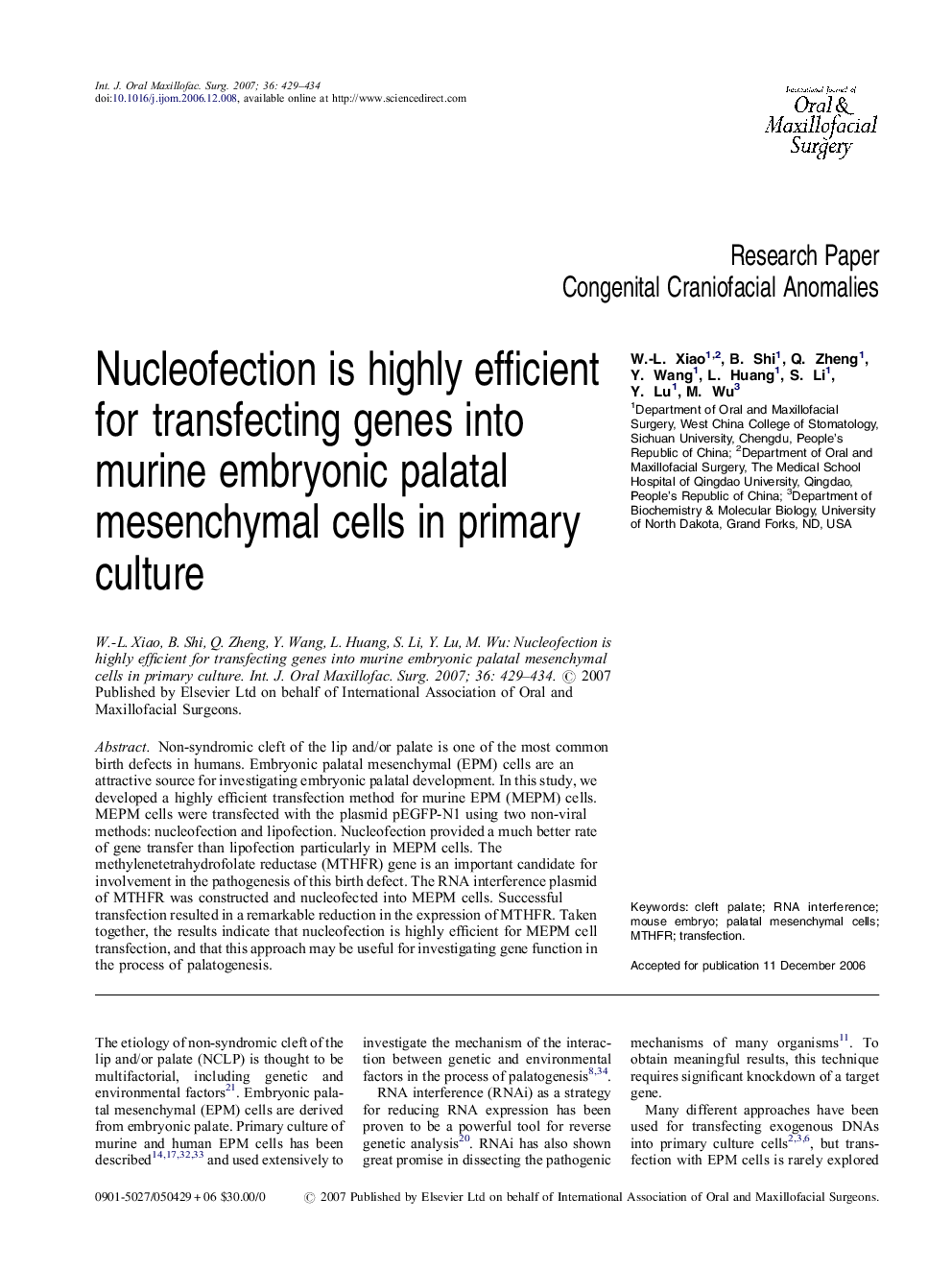| Article ID | Journal | Published Year | Pages | File Type |
|---|---|---|---|---|
| 3134747 | International Journal of Oral and Maxillofacial Surgery | 2007 | 6 Pages |
Non-syndromic cleft of the lip and/or palate is one of the most common birth defects in humans. Embryonic palatal mesenchymal (EPM) cells are an attractive source for investigating embryonic palatal development. In this study, we developed a highly efficient transfection method for murine EPM (MEPM) cells. MEPM cells were transfected with the plasmid pEGFP-N1 using two non-viral methods: nucleofection and lipofection. Nucleofection provided a much better rate of gene transfer than lipofection particularly in MEPM cells. The methylenetetrahydrofolate reductase (MTHFR) gene is an important candidate for involvement in the pathogenesis of this birth defect. The RNA interference plasmid of MTHFR was constructed and nucleofected into MEPM cells. Successful transfection resulted in a remarkable reduction in the expression of MTHFR. Taken together, the results indicate that nucleofection is highly efficient for MEPM cell transfection, and that this approach may be useful for investigating gene function in the process of palatogenesis.
